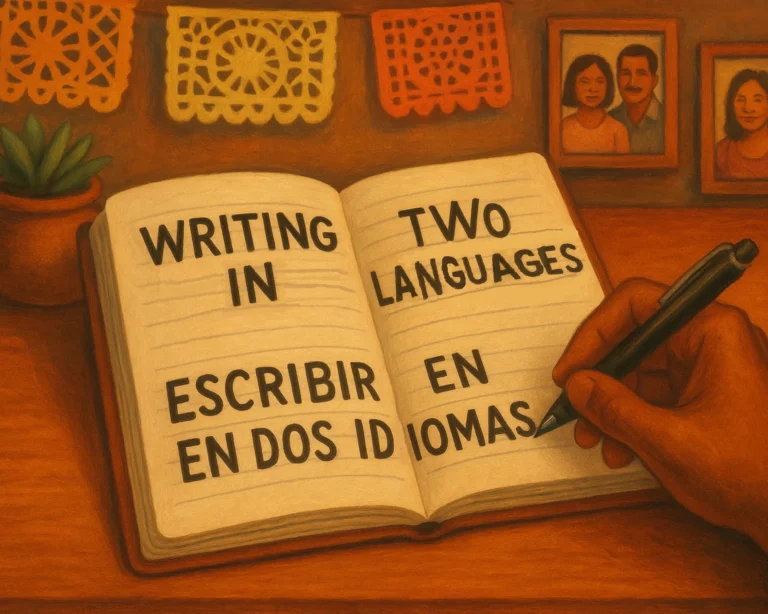As a Latinx writer, your story is invaluable. It holds a unique perspective, a rich history, and an authenticity that deserves to be shared with the world. However, getting your Latinx story published can seem like a daunting task. Whether you’re just starting or have already completed your manuscript, the publishing process is full of challenges, especially for writers from underrepresented communities. But don’t worry—you’re not alone. This blog post will offer practical tips and guidance to help you navigate the path to getting your Latinx story published.
1. Start with Your Authentic Voice
One of the most powerful aspects of Latinx writing is its authenticity. Your story is a reflection of your experiences, culture, and identity. To stand out as a writer, it’s crucial to start with your authentic voice. Don’t be afraid to write about your culture, your community, and your struggles. Your voice is what makes your writing unique, and it will resonate with readers who share similar experiences or who are seeking to learn more about your culture.
If you feel torn between cultural expectations and mainstream writing standards, remember that your identity as a Latinx writer is valuable. Writing from the heart allows you to honor your heritage and tell stories that are deeply meaningful to you and your community.
2. Hone Your Craft and Develop Your Skills
Before submitting your manuscript, it’s essential to hone your writing craft. Reading widely, attending writing workshops, and seeking feedback from other writers can help you refine your skills. If you haven’t yet, consider joining a writing group or taking courses focused on fiction, poetry, or memoir writing. Many organizations and publishing houses also offer writing mentorship programs that can help you improve your work while providing valuable insight into the industry.
The writing community is vast and supportive, especially for Latinx writers. Seek out spaces where you can learn from other voices and share your own. The more you refine your writing, the better equipped you’ll be to handle the next steps in the publishing process.
3. Understand the Publishing Industry
Before submitting your Latinx story for publication, it’s important to understand the publishing industry and how it works. There are two main avenues to pursue: traditional publishing and self-publishing.
-
Traditional Publishing: This path involves submitting your manuscript to literary agents or publishers who will decide whether to represent or publish your book. This can be a long process, but it offers the benefit of professional editing, marketing, and distribution.
-
Self-Publishing: If you prefer to maintain complete control over your work, self-publishing is another option. Platforms like Amazon’s Kindle Direct Publishing (KDP), IngramSpark, and Lulu allow writers to publish their books independently, although this route requires you to handle editing, design, and marketing.
Research which option is right for your goals. For many Latinx writers, traditional publishing can be competitive, but it offers the opportunity to reach a wider audience and gain recognition in the literary world. If you choose to self-publish, you’ll have more control but will need to invest time in promoting your book.
4. Find the Right Literary Agent or Publisher
If you choose to go the traditional publishing route, the next step is to find a literary agent or publisher who aligns with your genre and values. Research agents and publishers who specialize in Latinx voices, cultural stories, or the genre in which you write. Many literary agents are actively seeking diverse voices, so there’s a growing interest in Latinx authors.
-
Research Agents and Publishers: Use websites like QueryTracker, AgentQuery, or Duotrope to find agents and publishers. Many also have submission guidelines and specific preferences for what they are looking for.
-
Tailor Your Query Letter: A strong query letter is your first impression, so make sure it’s well-written and professional. Keep it concise, but provide enough information to showcase your story, why it’s unique, and why it fits the agent or publisher’s interests.
Consider querying multiple agents or publishers to increase your chances of success, but be mindful of submission guidelines and avoid submitting to multiple agents within the same agency.
5. Celebrate the Power of Bilingual Writing
As a Latinx writer, you may choose to write in both English and Spanish or even in Spanglish. Bilingual writing is becoming more prominent in mainstream literature and can connect with both Latinx and broader audiences.
Publishers are increasingly recognizing the power of bilingual stories as they appeal to both English-speaking readers and Spanish-speaking communities. However, it’s important to understand the nuances of writing in both languages. Ensure your bilingual writing is accessible and fluid, without losing the authenticity of the culture and language you are representing.
6. Focus on Representation and Cultural Sensitivity
When sharing your story, it’s important to keep in mind the need for cultural representation and sensitivity. Latinx stories often reflect complex issues, including identity, migration, language, and systemic barriers. Make sure to approach these topics with care, understanding, and respect for the community you are representing.
Consider working with sensitivity readers—individuals from the Latinx community who can review your manuscript for cultural accuracy and sensitivity. This feedback will help ensure that your portrayal of the culture is authentic and respectful while avoiding stereotypes.
7. Submit to Latinx-Focused Journals, Magazines, and Contests
Submitting your work to Latinx-focused literary journals, magazines, and contests can be an excellent way to gain recognition in the literary community. These platforms are specifically dedicated to amplifying the voices of Latinx writers, offering publication opportunities and exposure to editors and readers interested in Latinx literature.
Some well-known Latinx literary journals and contests include:
-
Latino Book Review
-
La Revista Literaria
-
The Acentos Review
-
The Mariachi Writers Contest
Winning a contest or being published in one of these journals can help you build credibility as a Latinx writer, and it’s a great way to get your work in front of industry professionals.
8. Don’t Give Up—Perseverance Is Key
The journey to publication can be long and challenging, but perseverance is key. Rejection is part of the process, but it doesn’t define your ability as a writer. Keep submitting, keep learning, and keep improving. Many successful Latinx authors, such as Julia Alvarez, Sandra Cisneros, and Junot Díaz, faced numerous rejections before achieving recognition, but their perseverance paid off.
Remember, your story matters. Keep writing, keep sharing, and don’t lose sight of your goal to see your Latinx story published and read by a wider audience.
Conclusion
Getting your Latinx story published may take time, but it is entirely possible with the right guidance, persistence, and understanding of the industry. Start with your authentic voice, hone your craft, and don’t be afraid to take risks with your writing. Whether you choose traditional publishing or self-publishing, the most important thing is to stay true to yourself and the story you want to tell. Your perspective, your heritage, and your voice are invaluable to the literary world.


